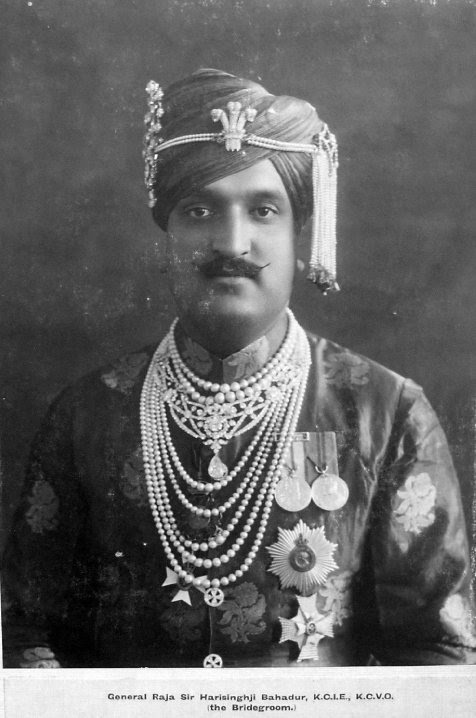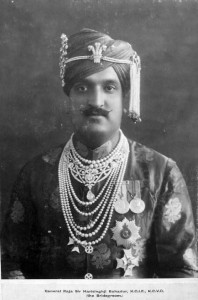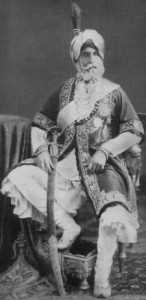
Dogra Dynasty And Their Fashion Statements
The royal house of Jammu and Kashmir or Maharaja of Kashmir is known as Dogra dynasty or Hindu Rajput dynasty. The rulers of this dynasty were known as Dogra Rajputs. The Dogras inhabit the hilly tracts bounding the mountains of the Kashmir valley on the south and extending to the plains of Punjab. The costumes of Dogras consist of very simple dresses that include long kurtas and pajamas with a tight fitting at the ankles. Women, on the other hand, wear tight bodice or jumpers over pajamas that are much similar to what men wear.
Origin & History

Kashmir’s King Dress (Source: gaashonline)
According to the paintings available, we can say that the dresses of the Dogra men can be divided into two parts: traditional Dogra dresses and the dresses depicting foreign influences. Through these paintings, we can also conclude that the Turban was a very important part of the dress of the Dogra kings. Both men and women of that period were seen covering their heads either by dupatta, or a cap. Apart from protecting them from the influences of climate, the turban had its socio-religious significance as well. The kings and generals also used to wear a headdress that used to denote their military power and status in Kashmiri society.
Besides the turban, the Dogra men used to cover the upper part of their body with kameez or what is now commonly referred to as Kurta. During the Sanga period, kurtas or tunics were usually worn by the soldiers. A soldier represented on the railing of stupa has been shown wearing a half sleeved tunic that reaches to his knees fastened around the waist with a kamarband.
Variety in the Attire
One will get to see vast varieties of kurtas or tunics during the Dogra dynasty. The kings of that period wore different styles and colors of tunics that symbolized their status in the society. The portrait of Gulab Singh has a soldier displayed where he wears a colored kameez that had a front opening. The color of his shirt, which was red, showed that he was ready to sacrifice his life for the sake of his land. Another type was a well fitted collarless kurta that had golden borders on the waist. Similarly, there were many styles of the tunic that Maharajas were known to wear.
Similarly, several paintings have depicted how the Kashmiri kings wore fancier looking shirts or kurtas which showed off their status in stark contrast to the common men who have been depicted with simpler looking and ordinary shirts.
Jewelry
Kamarbands and pearl necklaces were the common forms of jewelry worn by the kings of Jammu and Kashmir. In addition to that, their attire was never complete without the immaculate and regal looking turban.
Influence Today

Kashmiri Ranbir (royalark)
People now a- day’s wear garments made of cotton, wool or embroidered silk with the necks usually closed by gaily colored strings or buttons. They wear a pashmina belt around the waist. Even today men from Kashmir wear a Mughal type turban. A brightly colored scarf is the head dress for a Kashmiri woman.
Women generally wear a salwar which may be fitted, gathered at the end or even be embroidered. The commonly used design is the leaf of the China tree. On the upper part of the body they wear a loose folds gown with sleeves which are known as Pheran. They occasionally wear a sleeveless jacket of embroidered velvet, which is usually of a dark shade.
Global Influence
The pashmina shawls made in Kashmir are famous in various parts of India as well as the world. The chief demand for shawls has generally been from France. Embroidery on fine woolen clothes is the main employment for many Kashmiri people. The tunics worn by the kings of the rural dynasty are quite popular with the females as well as the males in different parts of the country.
References
Categories: Fashion Cults, Royalty
